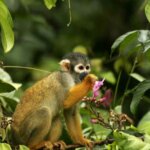New negative record for the Po river: brought below historical lows, burdened by drought
This was revealed by the latest ANBI Observatory report on water resources: 32% less than the previous monthly low of 2006.
The average flow rate of the Po river at Pontelagoscuro (last survey before the delta) was, in July, equal to 160.48 cubic meters per second, 32.29% less than the previous negative record of average monthly flow registered in July 2006. This was revealed by the latest report on water resources published by the ANBI Observatory, the Association of basin consortia, which also reports a new record of minimum flow rate, with only 104.3 cubic meters per second, observed last July 24th.
The Po basin, despite the storms that granted a brief respite from the great heat and recorded slight increases in flow rate, remains in great suffering, as indicated by the most recent surveys which, observes the ANBI, show how ephemeral the benefits of rains are. In Piedmont, where about 30 millimeters of rain fell in 7 days, there is only an increase of over 27 cubic meters per second in the flow of the Tanaro river, which almost zeroed last week, as well as for the Sesia river.
“The dams of the Biella and Vercelli bragging (Ingagna, Ostola, and Ravasanella) are holding back just 4.83 million cubic meters of water, that is almost 50% of the volumes recorded in the dry July 2017 and about 60% less than the average for the period” Specifies the Association.
The situation is no better in Lombardy, where the flow of the Adda river seems to stabilize below, which, compared to 2021, lacks 427 cubic meters per second, which is almost 80% of the range. “In line with this data, the water retained today in the Lombard basins marks -66% compared to the norm and -67% compared to last year”.
A similar scenario in Veneto, with aquifers that are practically dry almost everywhere and underground levels lower than in the last two decades. In the Region, the rains that fell in July were 41% less than the historical average, but in some basins, the deficit exceeded 60%, as in the case of the Sile River, where it recorded a decrease of 69%. The Apennine rivers of Emilia-Romagna are also more or less stable at very low levels, where only the Trebbia, on whose basin about 27 mm of rain fell in July, recorded a significant increase in flow.



